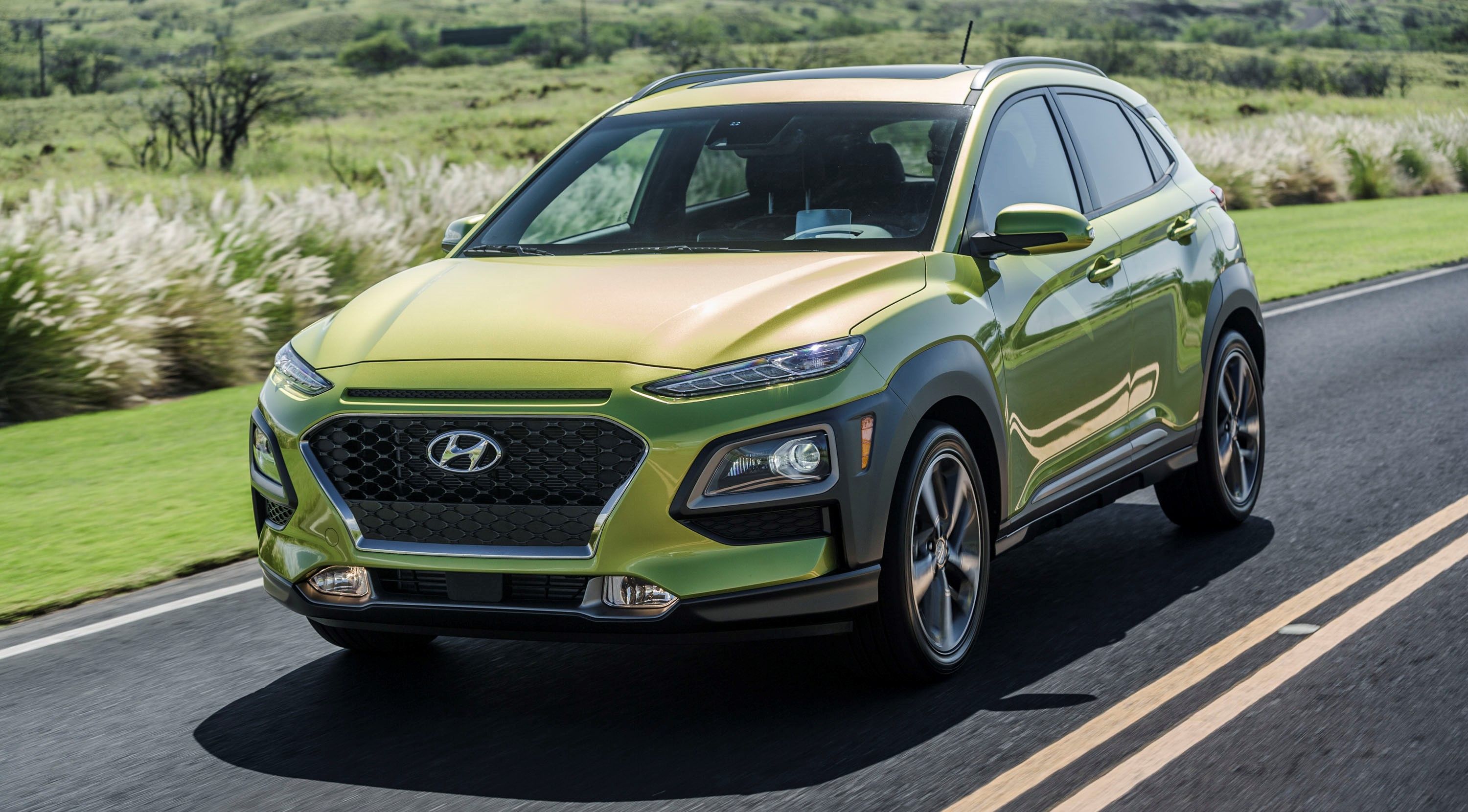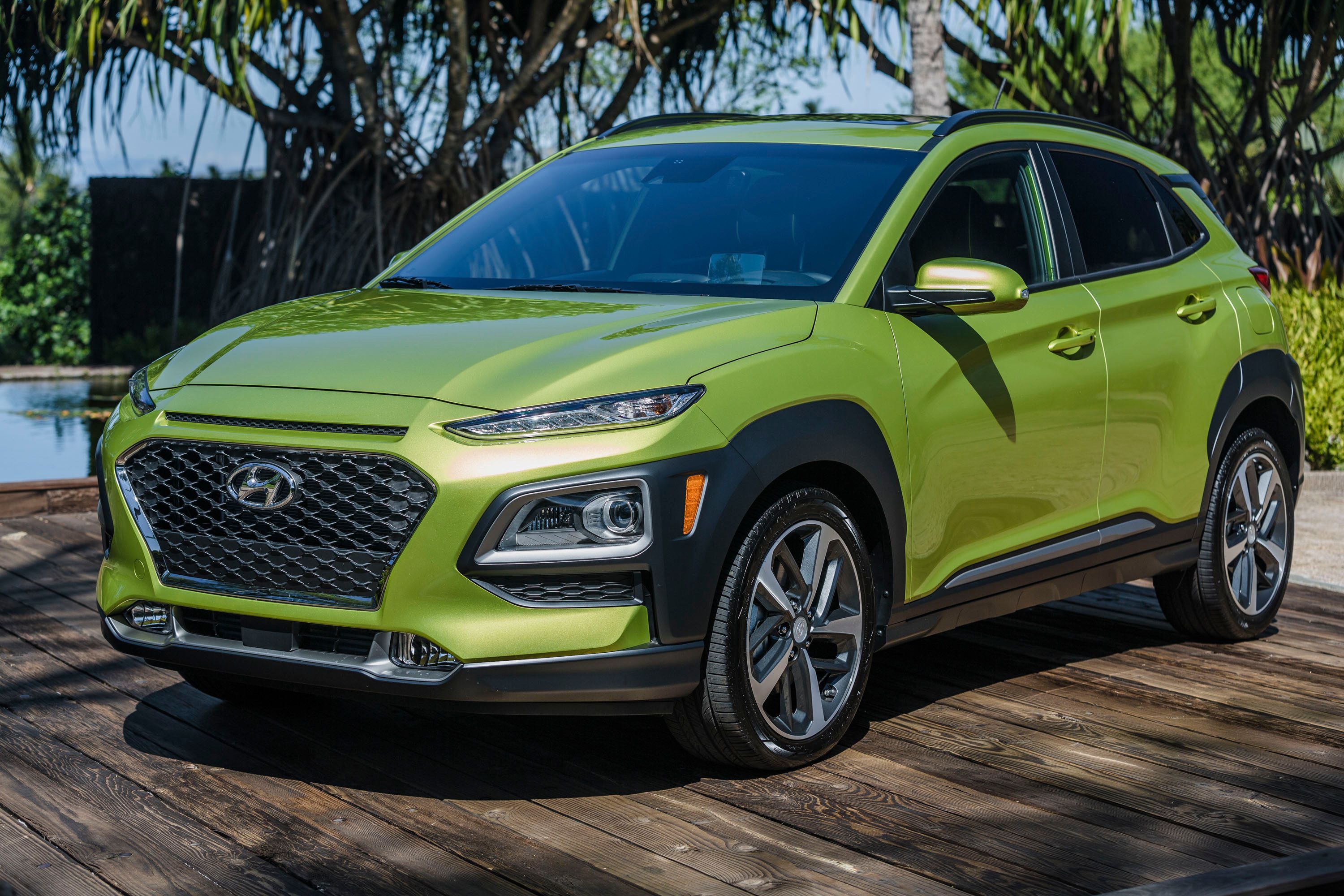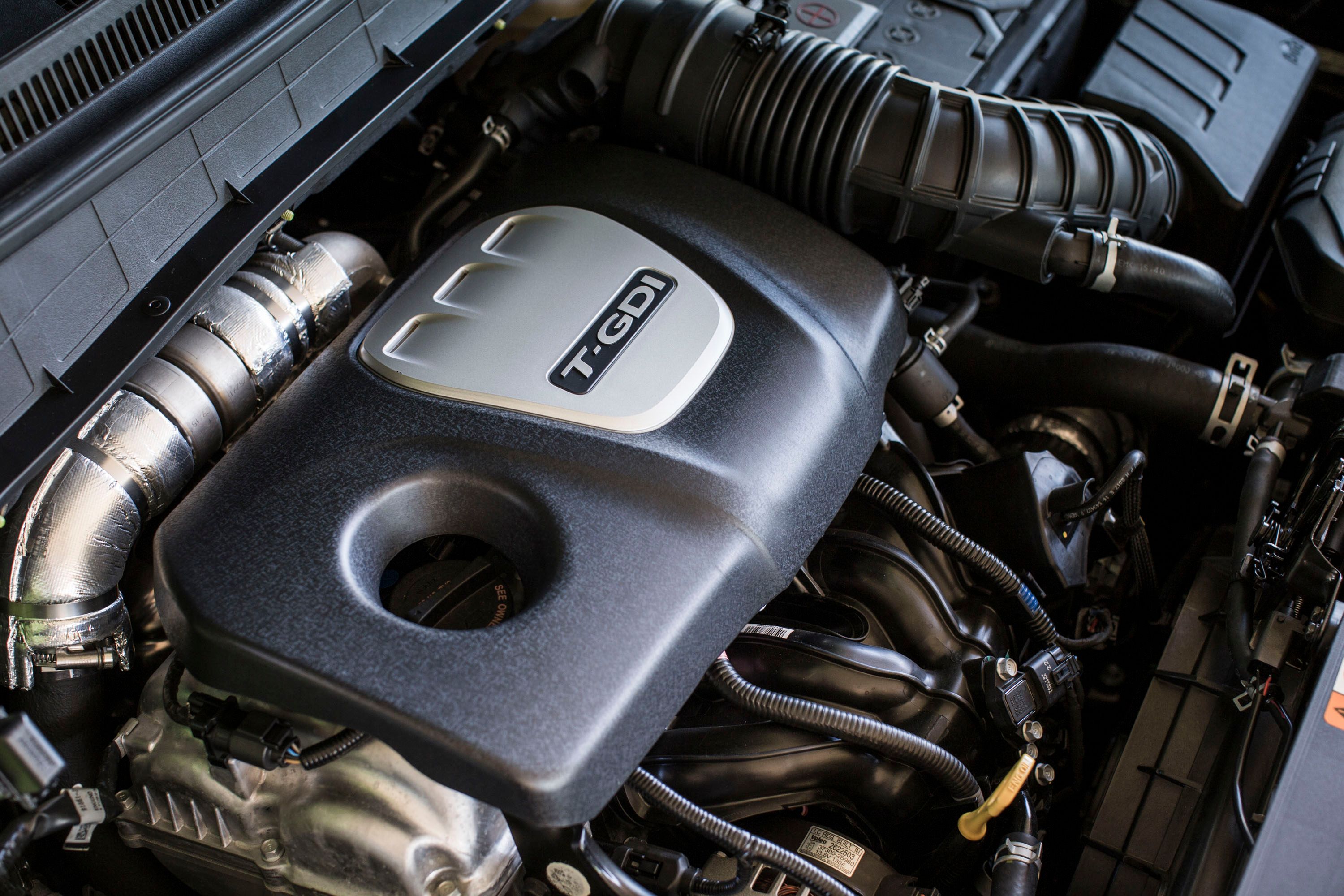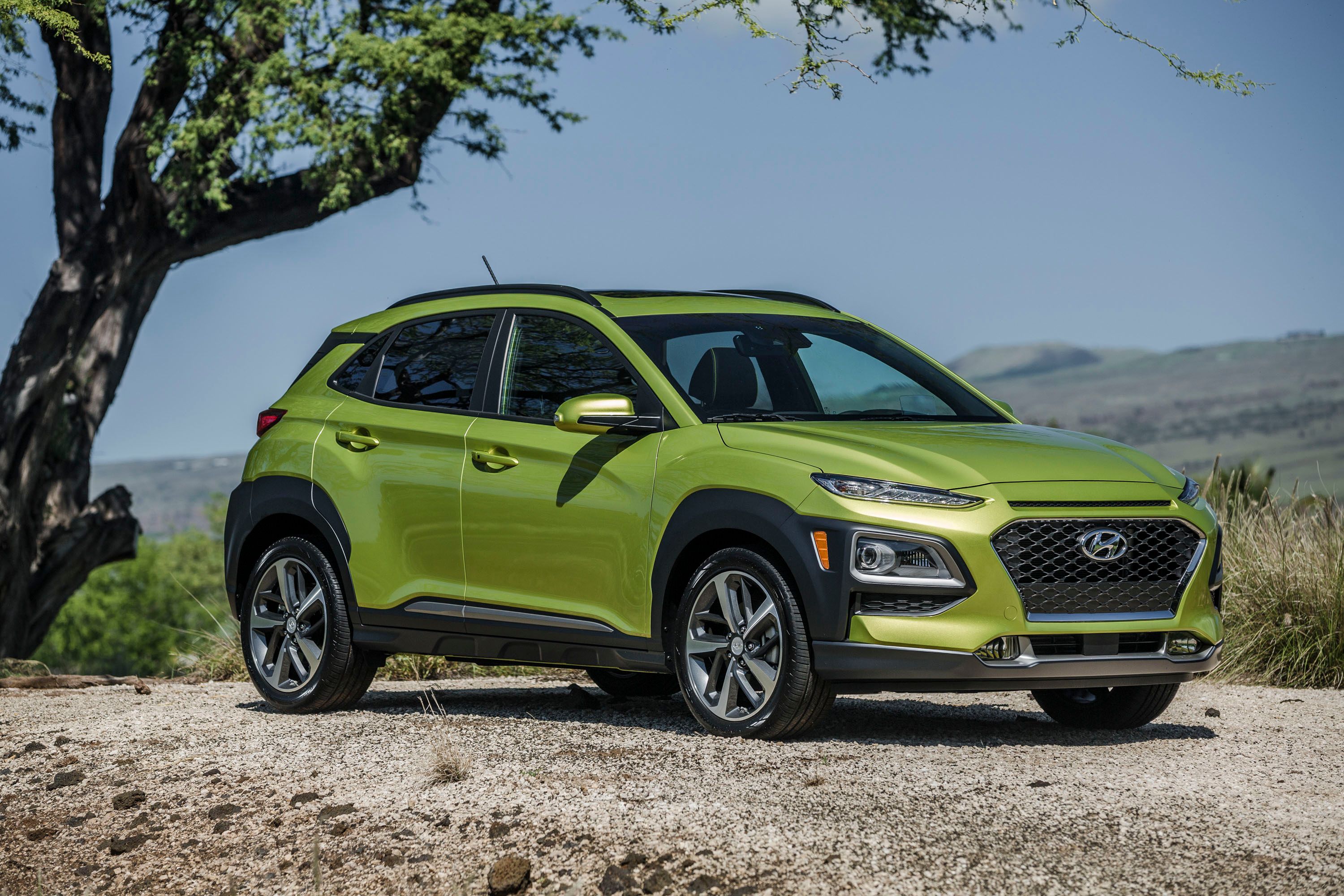The 2017 L.A. Auto Show has seen an impressive number of debuts, from the Chevrolet Corvette ZR1 to the new Jeep Wrangler. But perhaps one of the most consumer-focused vehicles is the new 2018 Hyundai Kona. This B-segment crossover offers room for five, nearly 20 cubic feet of cargo room, an available AWD system, two powertrain options, tons of in-dash tech and active safety equipment, and a funky design aimed at taming the urban jungles of Everytown, U.S.A.
The Kona isn’t the only compact crossover debuting at the 2017 L.A. Auto show, though. The Nissan Kicks is new and will be a major competitor for the Kona. Other rivals include the Jeep Renegade, Toyota CH-R, Honda HR-V, and Ford EcoSport. The Hyundai seems up to the challenge; it boasts a fun interior combined with an available 175-horsepower turbo-four backed by a dual-clutch automatic all riding on a new platform designed for responsiveness. Competitors with CVTs and less horsepower should be worried.
Continue reading for more on the 2018 Hyundai Kona.
Designed for fun, just like its namesake
The Kona name comes from the west-coast region of the Big Island of Hawaii. It’s hard to dream of a more exciting and thrill-seeker-friendly location than that. Hyundai obviously wants the Kona spirit to rub off on the crossover.
Aside from a well-schemed name, the 2018 Kona really seems like a fun-oriented crossover. Not that the competition is focused on being dull or boring. I mean, just look at them…
The Kona’s body features black plastic “armor” designed for protecting it from city life. It’s not as outlandish as the Citroën Cactus with its padded exterior door panels, but it’s close. A tall stance also decreased the chances of scraping on parking stops or steep driveways. SUV-like classing along the rocker panels and fenders adds to the rugged look.
Floating rooflines are all the rage these days, and the 2018 Kona has just enough split on its D-pillar to join the club. The roof slopes in the rear, too, but without cutting into rear-seat headroom. Wheel choices are sized in 16-, 17-, and 18-inches, depending on the trim level. Speaking of which, the Kona will come in several trim levels, with the Limited and Ultimate being the two highest.
As for power, two engines are available. The standard engine is a 2.0-liter four-cylinder making 147 horsepower and 132 pound-feet of torque with no forced induction and running the fuel-saving Atkinson combustion cycle. A six-speed automatic sends power to the front wheels. Optionally, the Kona get a turbocharged 1.6-liter four-cylinder making a respectable 175 horses and 195 pound-feet of torque. Torque is actually this engine’s specialty, with peak twist happening at only 1,500 rpm and staying on till 4,500 rpm. Horsepower then peaks at 5,500 rpm. Hyundai pairs the 1.6-liter with its seven-speed dual-clutch automatic, just like in the lovable Hyundai Elantra Sport. AWD is available and actually comes with an independent rear suspension in place of the torsion beam found on FWD models.
Pricing hasn’t been announced, but the Hyundai Kona is expected to start around $20,000 when it hits showrooms in the first quarter of 2018.
References
Hyundai Kona
Read our full review on the 2018 Hyundai Kona.
Read more 2017 Los Angeles Auto Show news.




